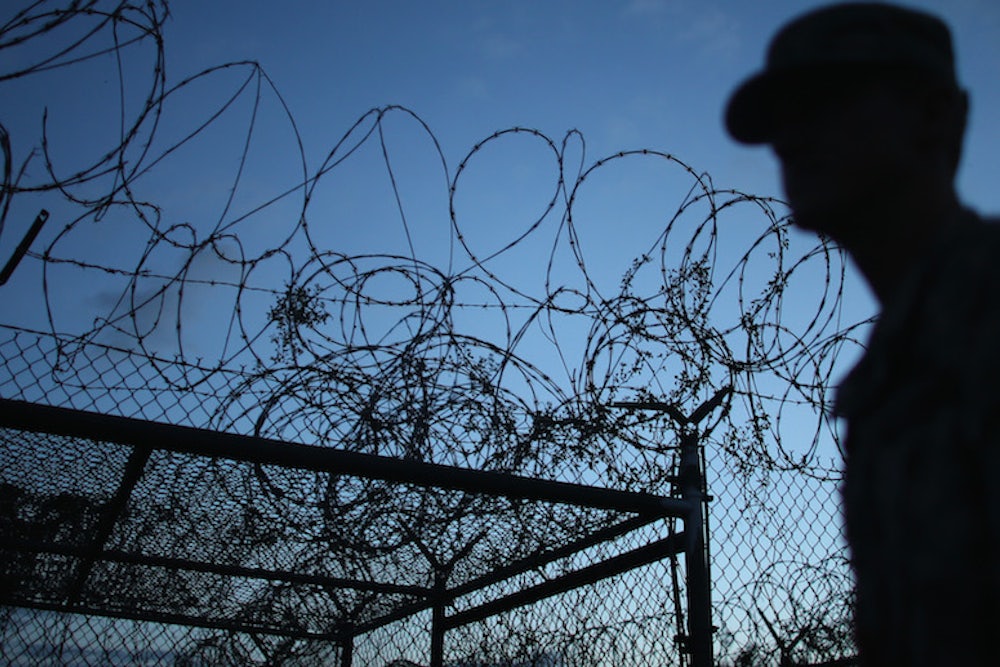As Al Qaeda suspect Abu Anas Al-Libi, who was captured recently in Libya, awaits trial before a New York federal court, military commissions for five of the U.S. military’s most high-value detainees drag on at the U.S. military base in Guantanamo Bay, Cuba, which has been plagued by hunger strikes and allegations that officials ignored torture complaints. Given this, should a prison that President Obama said is “no longer necessary to keep America safe” remain open?
The following infographic by the California Western School of Law approaches an answer, with numbers.
Of the 171 detainees currently at the base, 46 will not be tried due to lack of evidence. The remaining detainees are either pending criminal charges or have been cleared for transfer but remain at the base due to concerns about their treatment upon transfer to their home country. The graphic also highlights the cost savings that would result from closing the prison: $34,628 per prison per year at a high-security facility in the U.S. versus $686,747 at Guantanamo Bay. Why not transfer prisoners the over 100 U.S. prisons are capable of holding them? Because Congress has passed legislation that makes transferring detainees to U.S. prisons nearly impossible.
